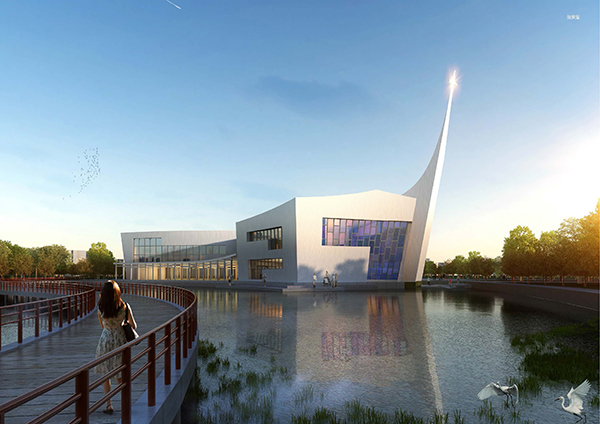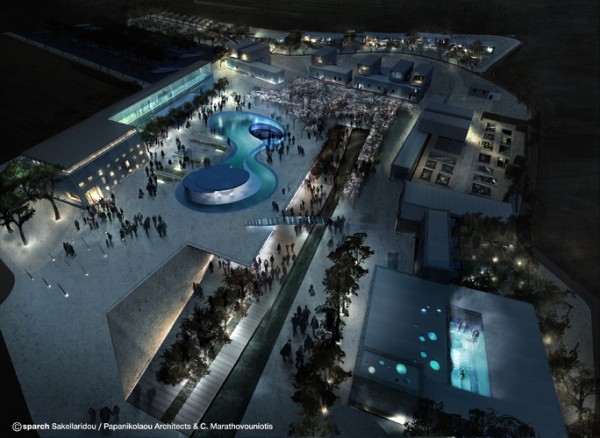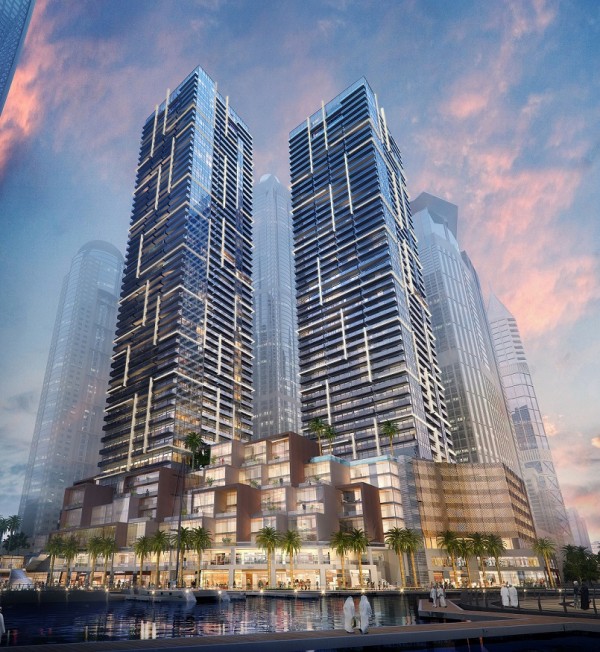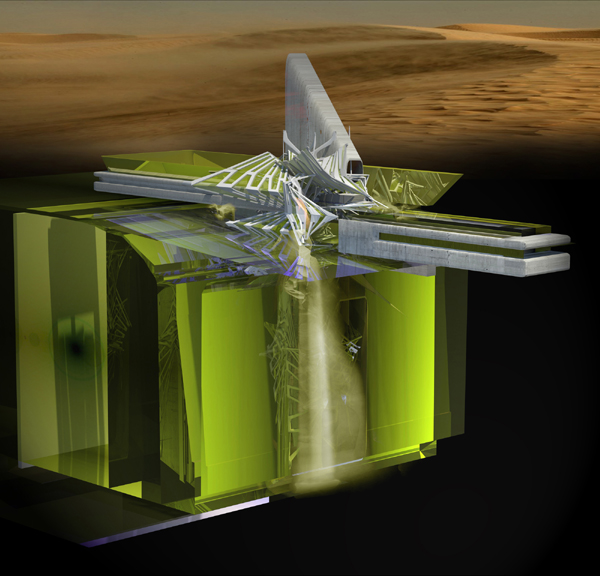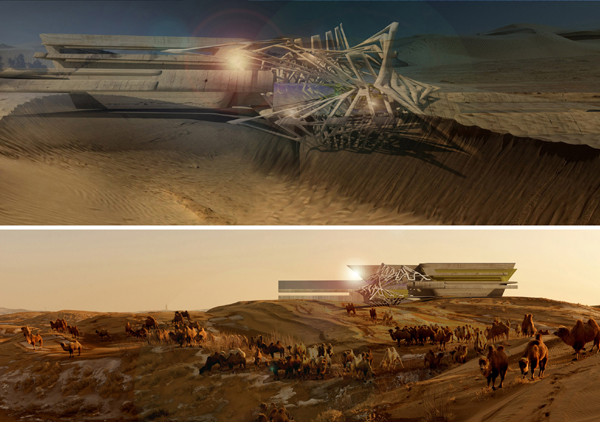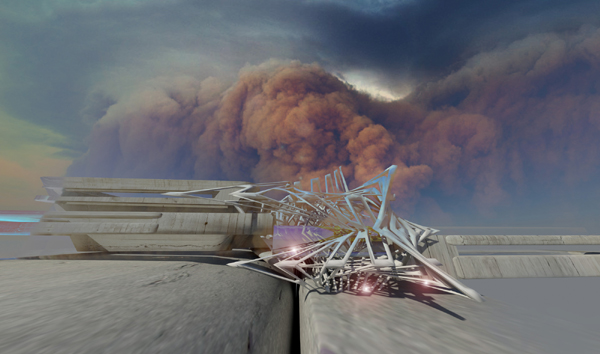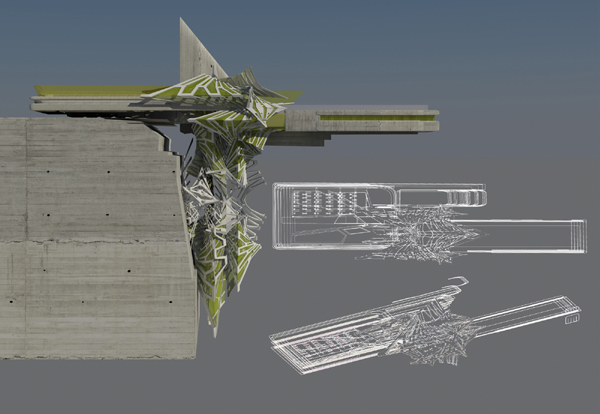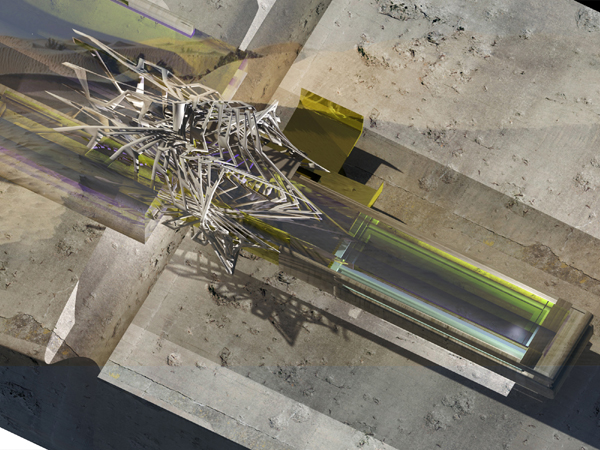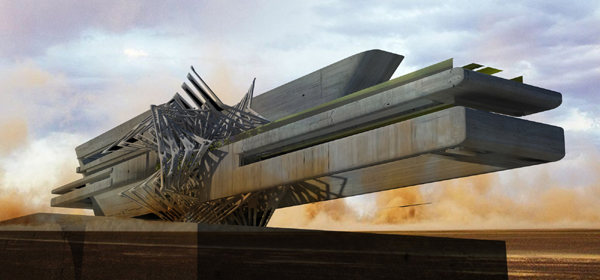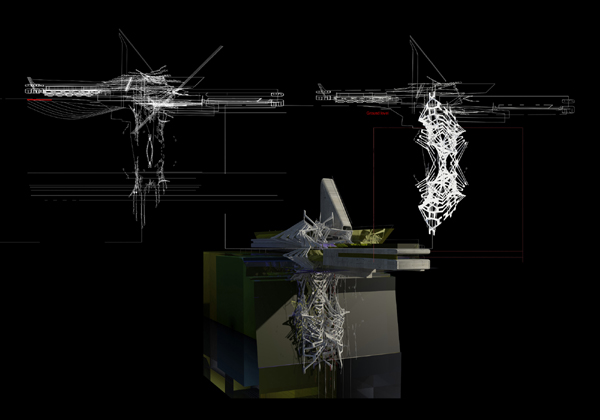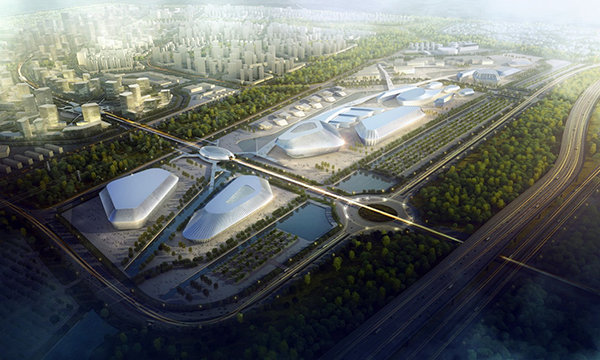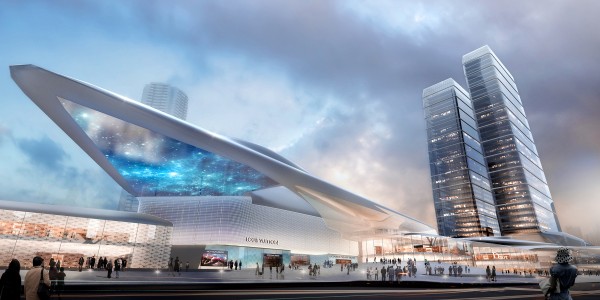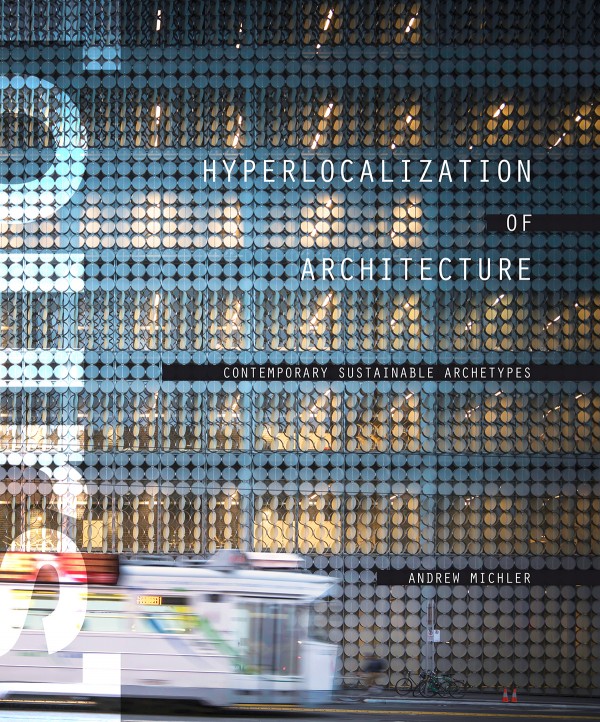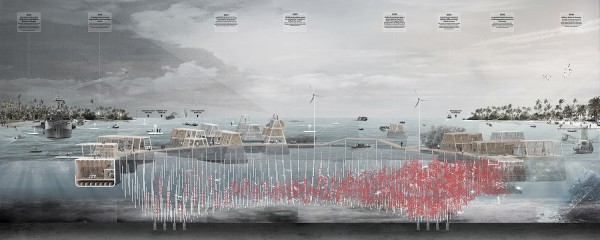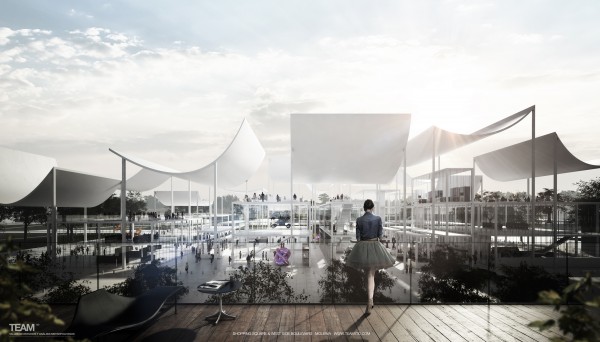
On July 22nd and 23rd 2015, in the city Beijing, China, Hua Yan Group, the promoter of the MOLEWA International Competition along with the President of UIA, officials from UNESCO, China’s business leaders and minister-level officials from the Chinese Government, held an award ceremony to socialize and recognize the competition results. The event also featured round tables to discuss next steps for the projects´ and masterplan refinement and construction.
TEAM730 led by José Muñoz Villers and Carlos Marín were awarded Silver Medal for Plot 7: Shopping Street, in the architects´ words: the International Competition for MOLEWA offers a fresh opportunity to re-invent and re-imagine the future of urbanism and architecture not only through the celebration of open public spaces and the overall pedestrian environment, but also, through different approaches to propose sustainable typologies in architecture to respond successfully to contemporary and future generations to come.
Architecture should enable us to design experiences and possibilities for things to happen; architecture should suggest rather than impose. The design philosophy is based on key components to respond successfully to the project´s highest performance:
WEST SIDE BOULEVARD OR THE CONTEMPORARY PEDESTRIAN STREET
By introducing the WEST SIDE BOULEVARD – a 126-meter long street which contracts and expands to create small, intimate plazas and pocket parks, the project successfully addresses not only to the client’s demands on creating a shopping street, but also to the tremendous opportunity to re-invent the contemporary pedestrian street. The WEST SIDE BOULEVARD links both ends of the parcel, operating as an urban component to connect with different plots and programs (Museum District and Shopping COMPLEX), by doing so this inner pedestrian street propels the flow of people, program and activity needed to activate the entire site. The pedestrian street serves as a meeting place, both spontaneous and planned, due to series of intimate plazas, pocket gardens and parks that appear along the way, it also provides multiple standpoints to observe the high-end retail stores, gallery spaces, and enjoy the flowers, handmade goods or Italian gelato kiosks. The architecture that is strategically placed along the boulevard generates a vertical impression with a deep perspective, inviting the visitor to come, experience and stay. The WEST SIDE BOULEVARD helps to create “a sense of place”; it offers a comfortable place to sit and gather while creating a unique image for the neighborhood. It promotes sustainability through minimizing heat islands and responding to climatic demands; and is capable of being maintained without excessive costs.
The WEST SIDE BOULEVARD also performs as the epicenter for culture, fashion, art and entertainment. Proposed as a multi-event pedestrian street, it is easily transformed from a busy commercial street with coffee shops, gelato and flower kiosks, into a vibrant fashion show to introduce new season clothing for the high-end retail stores, or a summer concert from a local orchestra. In order to offer the best climate conditions for this year-round events, the shopping street is protected by a series of thin columns supporting hanging roofs to cast shadows and protect from rain, without blocking views from and to the site and the surroundings.
ARCHITECTURE THAT ENABLES OPPORTUNITES
A collection of vitrines ranging from one floor to three stories; enclosed or entirely open; formal and informal; transparent or opaque; with art terraces or verandas; from 25 to 1000 square meters, the project attempts to suggest rather than impose architectures with a wide range of flexibility in future and potential tenants. The buildings are able to work as an stand-alone high-end retail store for a world-class couture brand, or to be rented to a AAA office space on one floor and a gallery space on the other; the scale of the buildings responds successfully in reassuring that natural light and ventilation (if needed) is achieved, that main and service entrances are placed where needed, but above all, that each vitrine has full 4-façade exposure. The scheme presents 8,717m2 of built area, but is fully flexible and able to increase by 20% in leasable area without losing its distinctive character, lightness and porosity.
ROOFSCAPE
A distinctive roofscape is introduced as a key component to engage an active dialogue with the Chinese culture, the subtropical climate, and as a signature of the architectural program and activities of the site. The project presents a series of light suspended structures supported by thin columns to increase a comfort zone for outdoors activities to take place. The distinctive geometry and lightness is referred to a contemporary re-interpretation of the Chinese traditional architecture of pagodas, such structures respond successfully to the subtropical conditions of the site while providing an open but protective roof. The roofscape is also intended to function as the ultimate unifying architectural element not only for the inhabitable architecture, but also for the informal network of pedestrian streets.
PROPOSED PROGRAM AND ACTIVITIES
The program proposed for the project is based on the client request for high-end retail and luxury. High-end goods as well as luxury services are placed strategically across the site to activate a perfect mix between shopping, business and pleasure. Access to these tailored services is achieved not only from the West End Boulevard, but through a series of perpendicular streets that links the architecture to the surroundings.High-End Stores: primarily located on corners or street intersections for highest visibility. The project includes 5 opportunities for luxury retail, each store could be turn into a magnificent temple of the brand, design for “slow shopping” and designed with a welcome environment. Based on extensive research in regard of high-end retail stores, the architecture is presented as a vitrine for the brands to personalize and organize it according to their requirements while maintaining the brand´s identity. The stores are to function not only for sales, but also for brand communication, store experience and identity. The high-end stores proposed for the project are of the size of “regular stores” that range from 400 to 1000 square meters. It has been considered that each store could contain: women´s universe: women shoes, leather goods, accessories; men´s universe: shoes, leather goods; luggage and accessories. They might also have small VIP lounge and Back of the House areas for stock, office manager space, manager assistance area, area for service entrance and security, toilet and kitchenette. Art Galleries: contemporary art galleries not only form part of the West End Boulevard, but they are also an inevitable and inseparable part of luxury universe. Luxury and art are very powerful and very closely linked sociological markers. Luxury product corresponds to a deep and relatively personal and spontaneous desire, while art, meaning skill or craft, is a product of a body of knowledge and spirit. Chinese Luxury Silk store: the most emblematic passion on the West End Boulevard is dedicated to a Chinese Luxury Silk store. Through its location it is proudly evoking the history of Silk Road that used to be a connection between China, Europe and the rest of the world. Today, it is a meeting point between China and Europe; it is a connection, a shared beauty, a shared luxury and desire. Italian gelato and coffee shops: the most unpredictable, subtle and indirect way of bringing a piece of European spirit is definitely through deeply integrated street life and enjoyment, but also through small pleasures, sweet delicacies and cup of coffee. These small nucleuses formed by coffee and ice-cream shops, create a gathering point, a peaceful and intimate shelter or a vivid atmosphere full of human whispering and laughter. Handmade craft: a product is luxury when it is handmade, tailored for few. Luxury means exclusiveness. Something truly unique, thus craftsmanship is undoubtedly an integrative part of this luxury universe. It gives it humble human touch. Finally, this new form of development that integrates luxury shopping + art + hedonism + spa + sweet delicacies + flower and silk crafts, represents a democratization of luxury: “exclusively for everybody”. It is creating a new life style.
STREET DESIGN
The proposal reinforces the idea that streets should not only serve as transportation routes, but be also front yards and public squares for the city, the city streets should be vibrant again. Since streets in general represent 25% of the city´s land area, the design and conditions of these public spaces has an important impact on the city´s environmental health and quality of life of the residents. The proposal design streets as public spaces that beyond moving people and goods, they comprise and extensive network of public open spaces to facilitate social, cultural, civic and economic interaction.
TOWARDS A SUSTAINABLE TYPOLOGY
The scheme features two main components with distinctive purposes: on the one hand, a series of 22 boxes to respond to the maximum variety and diversity of potential tenants, the box-like structures present proportions that become them suitable not only for the suggested use (commercial), but also for future and unpredictable new programs (housing, hospitality). On the other hand, a suspended roofscape is deployed strategically across the site creating not only a controlled micro-climate, but also a unique image for the neighborhood, the roofscape generates a vertical impression with deep perspective, inviting the visitor to come, experience and stay.
OPERATIONAL STRATEGY
In the same fashion that goods and services are delivered in typical shopping streets in Europe, the proposed scheme takes advantage of the inner pedestrian street (West End Boulevard) to be used, in days and hours previously chosen, as a service street where small vans or trucks have specific parking spots nearby stores, kiosks and offices. The project also features vehicle entrance and exit on the north facade and has assigned a specific area for service parking and freight elevators at the parking floor.
Competition: International Competiton for MOLEWA, Plot 7: Shopping Street
Client: Hua Yan Cultural Investment Company, Ltd.• Project Manager: Creativersal International, Ltd.• Competition organizers: UIA.
Location: Huayan Township / City of Ruichang, China.
Architecture: TEAM730 TALLER DE ESTUDIOS Y ANÁLISIS METROPOLITANOS
Design Directors: José Muñoz Villers + Carlos Marín
Design team: Djurdja Milutinovic, Claudio Nieto Rojas
Plot size: 10,000m2.
Program: 8,717m2 of mix-use and 10,000m2 of parking space.
Project year: 2015
Model: Fernando Kido Kerse
Visualization: CG Verón, lab07
Photographs: Marcos Betanzos Read the rest of this entry »

